- Author Matthew Elmers [email protected].
- Public 2023-12-16 21:49.
- Last modified 2025-01-24 09:17.
The Northrop HL-10 is one of 5 aircraft at NASA's Edwards Flight Research Center (Dryda, California). These machines were built to study and test the safe maneuvering and landing capabilities of an aircraft with low aerodynamic quality after returning from space. Studies using the HL-10 and other similar devices were carried out in July 1966 - November 1975.
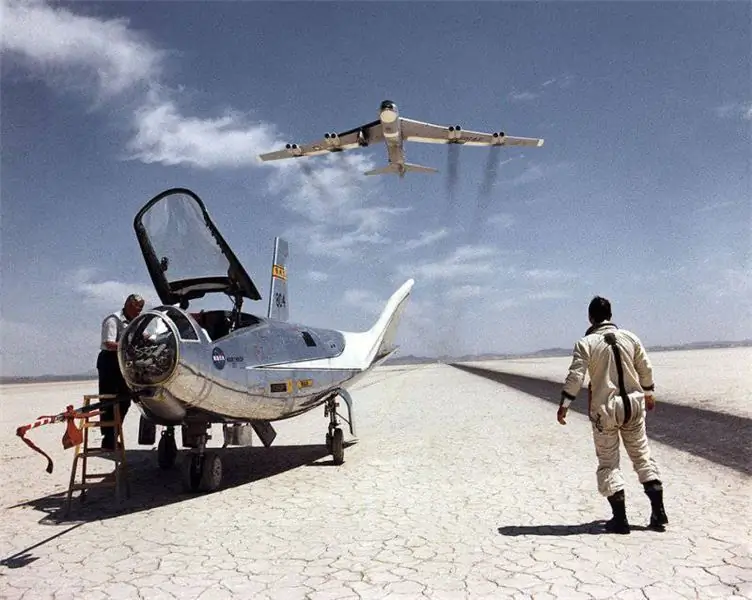
On the basis of theoretical studies in the early 1950s, a blunt nose cone was recognized as the most optimal shape for the head of promising ballistic missiles. When entering the atmosphere, the detached shock wave appearing in front of the apparatus with such a head significantly reduces the thermal loads and makes it possible to increase the mass of the warhead by reducing the thickness of the heat-shielding coatings.
The NACA specialists who took part in these works found that this dependence is also preserved for the half-cones. They also revealed another feature: during hypersonic flow, the difference in flow pressure on the lower and upper surfaces creates a lift, which significantly increases the maneuverability of the aircraft when leaving orbit.
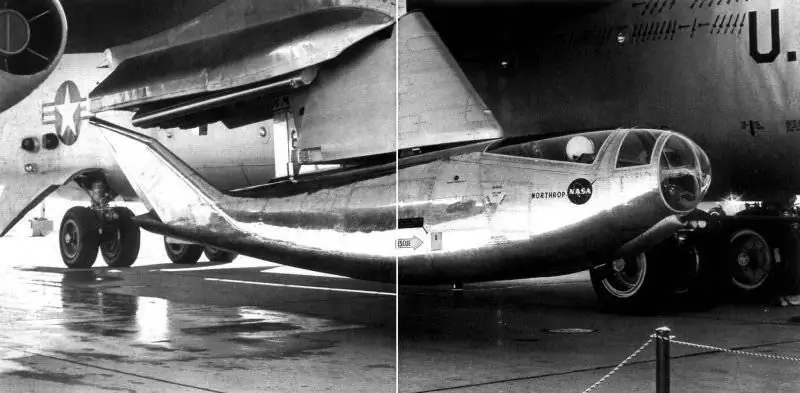
Vehicles with a supporting body (this scheme received this name), in terms of their gliding characteristics, occupy an intermediate position between ballistic capsules and orbital aircraft. In addition, the use of descent capsules in manned spacecraft requires significant launch and recovery costs. The advantages of "load-bearing bodies" include high design perfection, the possibility of reusable use, lower development costs in comparison with traditional videoconferencing systems, etc.
Specialists of the Laboratory. Ames, (hereinafter the Ames Center), a model of the apparatus in the form of a blunt half-cone with a flat upper surface was calculated. For directional stability, it was supposed to use two vertical keels, which continue the contours of the fuselage. The returned spacecraft of this configuration was given the name M2.
Similar studies were conducted at the Langley Center. Employees have calculated several schemes for a videoconferencing system with a load-bearing body. The most promising of them was the HL-10 project ("Horizontal Landing"; 10 is the serial number of the proposed model). The HL-10 apparatus had an almost round amidships top surface with three keels, a flat, slightly curved bottom.
Given the high characteristics of the spacecraft, NASA, together with the Air Force, in 1961 considered proposals for their use in the lunar program for the return of astronauts. However, the projects were not accepted. Despite the cuts in funding for pilot projects, this work continued thanks to the efforts of enthusiasts. One model airplane made a scale model of the aircraft and carried out throw tests. Real success has allowed the recordings of the tests to be demonstrated to the management of the Dryden and Ames Centers. The first allocated $ 10,000 from the reserve funds for the manufacture of a full-scale apparatus and the second agreed to conduct aerodynamic tests. The device was given the designation M2-F1.
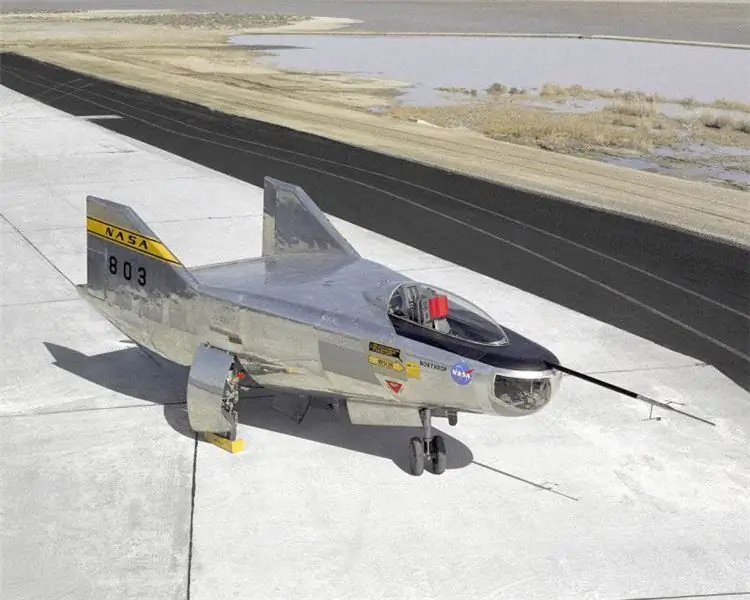
The six-meter model was made of aluminum tubes (power structure) and plywood (body). A pair of elevons was mounted on the upper edge of the tail section. External aluminum keels were equipped with rudders. Good results of blowdowns made it possible to start taxiing tests. But the lack of a suitable overclocking tool forced the purchase of a Pontiac with a forced engine, which provides acceleration of the 450-kg model to 160-195 km / h. The controls had low efficiency and did not provide the required stabilization of the product. The problem was solved by eliminating the central keel and improving the control surfaces.
In a number of runs, the model was raised above the ground to a height of 6 m. The success of the tests allowed the project participants to persuade the director of the Dryden Center to unhook the device for self-planning from the car. After that, throw tests of the model began, the device was towed by a C-47 aircraft to an altitude of 3-4 km. The first gliding flight took place on August 16, 1963. Overall, the M2-F1 demonstrated good stability and handling.
The spectacular flight of the new device, as well as the low cost of the work performed, made it possible to expand the work on this topic.
In mid-1964, the American aerospace agency NASA signed an agreement with Northrop for the construction of two wingless all-metal reusable vehicles with a self-supporting body. The new vehicles were designated HL-10 and M2-F2, which differed in the profile of the carrying body.
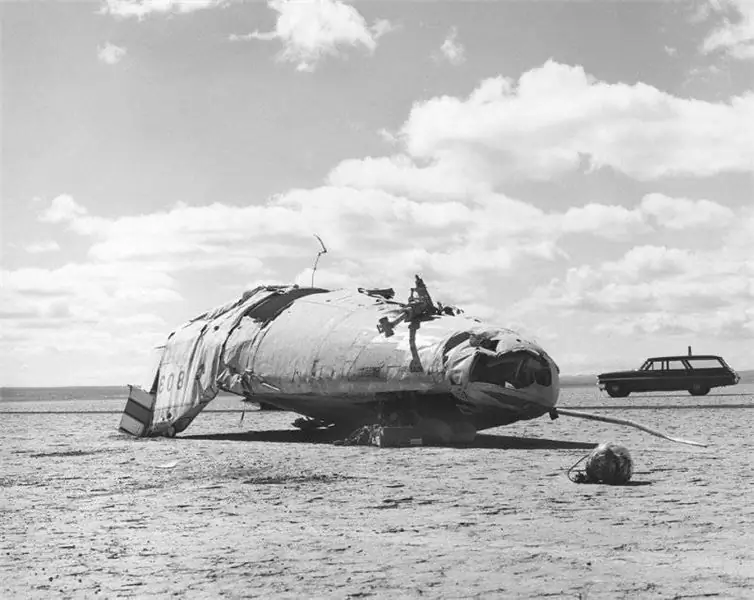
In appearance, the M2-F2 basically repeated the M2-F1: a semi-cone with an upper flat surface was equipped with a pair of vertical keels without external elevons, rudders could be used as brake flaps. To broaden the view, the cockpit was shifted forward, and the nose was glazed. To reduce drag and improve flow conditions, the body of the model was slightly lengthened. In the tail section of the M2-F2, a ventral flap was placed for pitch control, the upper surface of the hull was completed by a pair of elevon flaps, which provided roll control in antiphase.
The Northrop HL-10 hull was an inverted semi-cone with a rounded upper fuselage and a flat bottom. In addition, there was a central keel. In the tail section, two trapezoidal elevons with small shields were installed. Balancing panels were mounted on the outer keels, and the central keel was a split rudder. Balancing panels and elevon shields were used for stabilization only during trans- and supersonic flight. When gliding after the active section at a speed of M = 0, 6-0, 8, they were fixed in order to avoid a sharp decrease in aerodynamic quality during landing. The estimated landing speed was supposed to be about 360 km / h.
Since the rocket planes were developed in rather strict financial constraints, to save money, the vehicles were equipped with ready-made units and elements: the main landing gear was taken from the F-5 fighter, the ejection seat of the F-106 fighter seat, the front support - from the T-39 aircraft.
The instrumentation of the aircraft was also distinguished by its simplicity - during the first flights, they even lacked attitude sensors. The main measuring instruments are accelerometer, altimeter, speed, slip and angle of attack sensors.
Both vehicles were equipped with an XLR-11 engine (thrust 3.6 tons), which was used for a short time on the X-15 aircraft. To increase the range during an emergency landing, the M2-F2 and HL-10 were equipped with auxiliary liquid-propellant rocket engines fueled by hydrogen peroxide.
The fuel tanks of the models during the throw tests were filled with water weighing 1.81 tons.
On July 12, 1966, the first gliding flight of the M2-F2 took place. The model weighing 2.67 tons was separated from the B-52 at an altitude of 13500 m at a speed of M = 0.6 (697 km / h). The duration of the autonomous flight was 3 minutes 37 seconds. On May 10, 1967, an emergency landing occurred. The reason for the loss of control was the "Dutch step", during which the roll angle was 140 degrees.
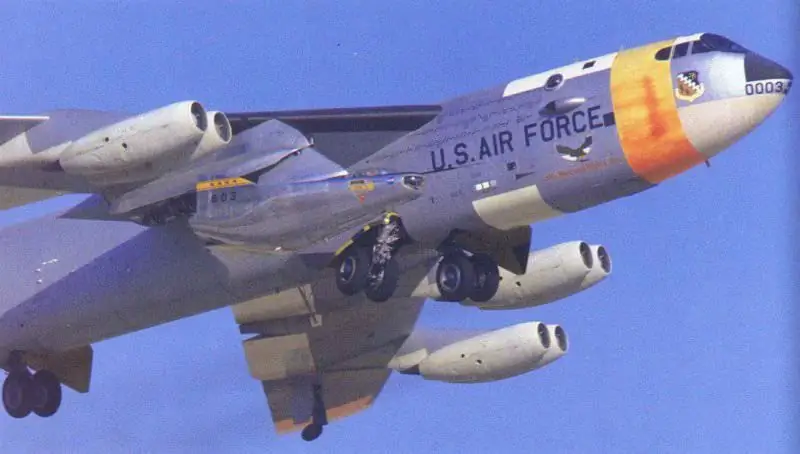
It was decided to restore the dilapidated apparatus by modifying the design. To provide lateral stability on the model, which received the designation M2-F3, installed a central keel and jet engine blocks of the control system.
Throw tests were resumed in June 1970. Six months later, the first flight took place with the inclusion of a sustainer liquid-propellant rocket engine. At the final stage of testing, completed in 1972, the M2-F3 was used to solve various auxiliary tasks, including the development of a remote control system as part of the Space Shuttle program. The flight characteristics of the model were also evaluated at the limiting altitude and speed flight modes.
In December 1966, throw tests of the HL-10 began. For them, the B-52 was also used. The very first autonomous flight was complicated by serious problems - the controllability in the transverse direction was extremely unsatisfactory, the efficiency of the elevons during turns fell sharply. The flaw was eliminated by a significant revision of the outer keels, which formed a flow over the control surfaces.
In the spring of 1968, Northrop HL-10 planned flights continued. The first launch of the sustainer liquid-propellant rocket engine took place in October 1968.
The HL-10 was also used in the interests of the Space Shuttle. The last two flights of the apparatus, performed in the summer of 1970, were devoted to practicing the landing with the power plant turned on. To this end, the XLR-11 was replaced with three hydrogen peroxide liquid propellant rocket engines.
The experiment as a whole was considered successful - the engines operating during landing reduced the glide path angle from 18 to 6 degrees. However, the pilot of the apparatus noted that despite the work of ground-based guidance systems, some difficulties arose in determining the moment of turning on the rocket engines.
Over the entire testing period, the HL-10 completed 37 launches. At the same time, the model set record altitude (27.5 km) and speed (M = 1.86) for rocket gliders with a load-bearing body.
Tactical and technical characteristics:
Length - 6.45 m;
Height - 2.92 m;
Wingspan - 4, 15 m;
Wing area - 14, 9 m²;
Empty weight - 2397 kg;
Full weight - 2721 kg;
Maximum takeoff weight - 4540 kg (fuel - 1604 kg);
Power plant - Reaction Motors XLR-11 four-chamber rocket engine (thrust up to 35.7 kN);
Flight range - 72 km;
Practical ceiling - 27524 m;
Maximum speed - 1976 km / h;
The coefficient of thrust per unit of mass is 1: 0, 99;
Wing loading - 304, 7 kg / m²;
Crew - 1 person.
Prepared based on materials:






